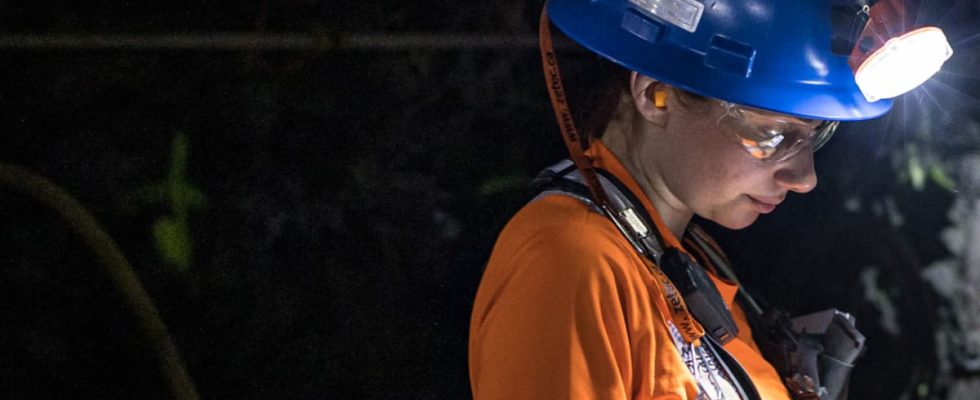A real race against time is underway in Quebec to fill 14,000 paying jobs by 2028 in the mining sector. “We’ll have to eat crusts. We have work to do. It will depend on the opening of businesses.”
• Read also: Severe criticism of our shift towards the electric battery sector
The coordinator of the National Mining Center of the Val-D’Or Vocational Training Center, Martin Richard, is realistic when we talk to him about the most recent estimate of labor needs in the mining sector in Quebec.
“I train between 450 and 500 students per year in my four mining programs,” he adds. This is insufficient for market demand. However, in the coming years, the automation of equipment will have to be taken into account. These are more and more present on the different mining sites.”
Martin Richard estimates that there will be a lot of work to do related to training to fill the 14,000 jobs available by 2028.
Martin Richard – CFP of Val-D’Or
A total of 14,358 positions, including several with salaries around $90,000 per year, will be filled in Quebec according to the survey conducted by the Mining Industry Sectoral Labor Committee (CSMO). Mines) and the National Institute of Mines of Quebec (INMQ). The training of future mining workers must go through partnerships with companies, according to Mr. Richard.
“The more influence we have in mining with our learners, the more we will be able to train,” underlines the coordinator.
1000 jobs to fill
At Agnico Eagle, a company specializing in the extraction, processing and production of gold, approximately 1,000 positions will need to be filled in the next three years.
“We have demographic issues in Abitibi. The workforce is aging, mentions Nicolas Bolduc who is regional director of human resources. We have needs like everyone else in the industry. The whole sector is fighting for workers.”

Nicolas Bolduc, regional human resources director at Agnico Eagle
Within this Canadian company, we are focusing in particular on female recruitment to compensate for the numerous departures.
“The mining industry is increasingly automated and robotized,” adds Mr. Bolduc. It’s no longer like it was in the old days with the physical work at the bottom of the mine. There is a lot of work that is now done in control rooms or on the surface.
In addition to wanting to expand its pool of workers from First Nations, Agnico Eagle wants to attract labor from mines that have closed their doors in recent months. For example, that of Stornaway which laid off 425 workers last October.
He would also like to develop programs for new immigrants arriving in Quebec while “sticking” to schools in the region in order to be able to count on a local workforce. This is the reality that awaits the majority of mining companies who will have to be creative to hire the employees necessary for their production.
High placement rate
The placement rate in mining career programs is more than 90%. Some students do not enter the job market at the end of their training.
“Young people sometimes do a second DEP. They may be interested in another sector such as diamond mining or drilling, explains Martin Richard. They can earn money with additional training.”
There is also the reality of “fly in fly out which is still very present in the field. Of the 450 students at the Val-D’Or CFP, more than 75% come from outside the Abitibi-Témiscamingue region.
“These students take more time to find out what they want to do. It allows them to stay at home. They fly to work for a period of 14 or 21 days depending on the company. There is no uprooting of family.”
